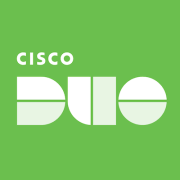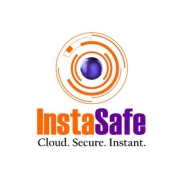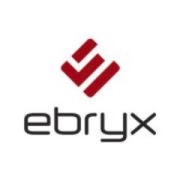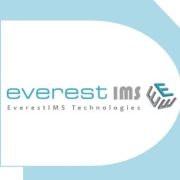ZTNA as a Service enhances network security by granting secure access to applications based on user identity and context, replacing traditional VPNs. It offers granular access control, minimizing the risk of unauthorized entry and enhancing security postures.
ZTNA as a Service redefines security by focusing on the secure access principle. Unlike VPNs, it doesn't grant broad network access but restricts application access based on user identity, device health, and location. This minimizes the attack surface and strengthens data protection. Organizations benefit from easily scalable solutions that fit their digital ecosystems while ensuring high security and compliance standards.
What features are essential?ZTNA as a Service finds application in industries like finance and healthcare, where data privacy is critical. These sectors benefit from its robust access control, ensuring only authorized personnel access sensitive information. Manufacturing uses ZTNA for protecting intellectual properties while supporting remote production teams with secure access.
This security solution is beneficial for organizations by offering enhanced security posturing, scalability, and compliance with industry regulations. It provides flexible and efficient methods of securing network access at an application level, reducing risks associated with unauthorized access.
| Product | Market Share (%) |
|---|---|
| Zscaler Zero Trust Exchange Platform | 16.1% |
| Prisma Access by Palo Alto Networks | 12.6% |
| Cato SASE Cloud Platform | 11.5% |
| Other | 59.8% |









































Zero Trust Network Access is an emerging security model that focuses on providing secure access to resources based on the principles of zero trust. ZTNA as a Service is a cloud-based solution that offers organizations the ability to implement ZTNA without the need for extensive infrastructure or expertise. There are several types of ZTNA as a Service providers, each offering unique features and capabilities.
1. Cloud-based ZTNA: These providers offer ZTNA solutions that are entirely cloud-based. They leverage the scalability and flexibility of the cloud to provide secure access to resources from any location. Cloud-based ZTNA providers often offer features such as multi-factor authentication, user and device profiling, and granular access controls.
2. Managed ZTNA: Managed ZTNA providers offer a fully managed service where they handle the implementation, configuration, and maintenance of the ZTNA solution. This is particularly beneficial for organizations that lack the internal resources or expertise to manage their ZTNA infrastructure. Managed ZTNA providers often provide 24/7 monitoring and support to ensure the security and availability of the ZTNA solution.
3. Hybrid ZTNA: Hybrid ZTNA providers offer a combination of on-premises and cloud-based ZTNA solutions. This allows organizations to leverage their existing infrastructure while also benefiting from the scalability and flexibility of the cloud. Hybrid ZTNA providers often provide seamless integration with existing security tools and infrastructure.
4. Identity as a Service with ZTNA: Some providers offer ZTNA as an add-on to their existing IDaaS solutions. This allows organizations to integrate ZTNA capabilities with their identity and access management systems, providing a comprehensive security solution. IDaaS with ZTNA providers often offer features such as single sign-on, identity governance, and privileged access management.
5. Network as a Service with ZTNA: NaaS with ZTNA providers offer a combination of network connectivity and ZTNA capabilities. They provide secure access to resources through their network infrastructure, eliminating the need for organizations to manage their own network infrastructure. NaaS with ZTNA providers often offer features such as secure connectivity, traffic segmentation, and network monitoring.
ZTNA as a Service solutions offer a secure and efficient way to implement Zero Trust principles in an organization's network infrastructure. By leveraging cloud-based solutions, these solutions enable organizations to adopt a Zero Trust approach without the need for extensive on-premises infrastructure or complex configurations. Here's an overview of the different ways ZTNA as a Service works:
1. Cloud-based Architecture:
ZTNA as a Service provuders utilize cloud-based architecture to deliver their services. This eliminates the need for organizations to deploy and manage their own hardware or software infrastructure.
2. Secure Access:
ZTNA as a Service providers ensure secure access to applications and resources by implementing a Zero Trust model. They authenticate and authorize users based on various factors such as user identity, device posture, and contextual information.
3. Identity Verification:
Users are required to authenticate their identity before accessing any resources. This can be achieved through multi-factor authentication methods like passwords, biometrics, or hardware tokens.
4. Micro-segmentation:
ZTNA as a Service Providers implement micro-segmentation to divide the network into smaller segments. Each segment has its own security policies and access controls, reducing the attack surface and limiting lateral movement.
5. Application-level Access:
Instead of granting network-level access, ZTNA as a Service Providers focus on providing application-level access. Users are granted access only to the specific applications or resources they need, based on their role and permissions.
6. Secure Connectivity:
ZTNA as a Service Providers establish secure connections between users and applications, regardless of their location. This is achieved through encrypted tunnels, ensuring data confidentiality and integrity.
7. Continuous Monitoring:
ZTNA as a Service Providers continuously monitor user activities, network traffic, and application behavior. Any suspicious or anomalous behavior is detected and flagged for further investigation.
8. Scalability and Flexibility:
ZTNA as a Service Providers offer scalable solutions that can accommodate organizations of all sizes. They provide flexibility to add or remove users, applications, and resources as per the organization's requirements.
9. Integration with Existing Infrastructure:
ZTNA as a Service Providers seamlessly integrate with an organization's existing infrastructure, including identity providers, firewalls, and security systems. This ensures a smooth transition and minimizes disruption during implementation.
10. Centralized Management:
ZTNA as a Service Providers offer centralized management consoles or dashboards. These consoles provide administrators with visibility and control over user access, policies, and security configurations.
In summary, ZTNA as a Service providers leverage cloud-based architecture, implement Zero Trust principles, and provide secure application-level access to users. ZTNA as a Service offers scalability, flexibility, and centralized management, enabling organizations to enhance their network security posture without the need for extensive on-premises infrastructure.
ZTNA as a Service enhances security for remote workers by providing a secure framework where only authorized users gain access to specific applications. Unlike traditional VPNs, ZTNA ensures that each access request goes through rigorous verification, effectively reducing the risk of unauthorized access. This service continuously monitors user activity and adapts to new threats, ensuring remote workers can safely access necessary resources without compromising the organization’s security.
What Are the Cost Benefits of Implementing ZTNA as a Service?Implementing ZTNA as a Service offers cost benefits by eliminating the need for expensive hardware investments and maintenance. With a subscription-based model, you can scale services according to your organizational needs. This approach reduces upfront infrastructure costs and minimizes operational expenses associated with managing traditional network security solutions. Organizations can also benefit from reduced risk and compliance costs by maintaining a robust security posture.
How Does ZTNA as a Service Differ from Traditional VPN Solutions?ZTNA as a Service differs from traditional VPN solutions in how it grants access. Traditional VPNs often provide blanket access to the entire network once connected, whereas ZTNA only grants access to specific applications the user is permitted to use. This principle of least privilege significantly minimizes security risks. Additionally, ZTNA does not expose the network to external threats as it operates on a zero-trust model, verifying each access attempt individually, enhancing both security and efficiency.
What Challenges Can Be Mitigated with ZTNA as a Service?ZTNA as a Service helps mitigate challenges like unauthorized access, maintaining compliance, and protecting sensitive data. By enforcing stringent access controls and continuous monitoring, it ensures that only verified users can access resources. This significantly reduces the risk of data breaches. It also helps organizations maintain compliance by aligning with industry standards for data protection and privacy, simplifying the process of regulatory adherence and reducing potential legal liabilities.
Why Is Scalability Important in ZTNA as a Service Solutions?Scalability is crucial in ZTNA as a Service solutions because organizations need flexible security measures that grow with their needs. As a business expands, so does its network and user base, necessitating a solution that can adapt without the need for extensive reconfiguration or additional infrastructure. Scalability ensures that as your organization adopts new applications or expands its remote workforce, your security framework can easily accommodate these changes without loss of performance or security.